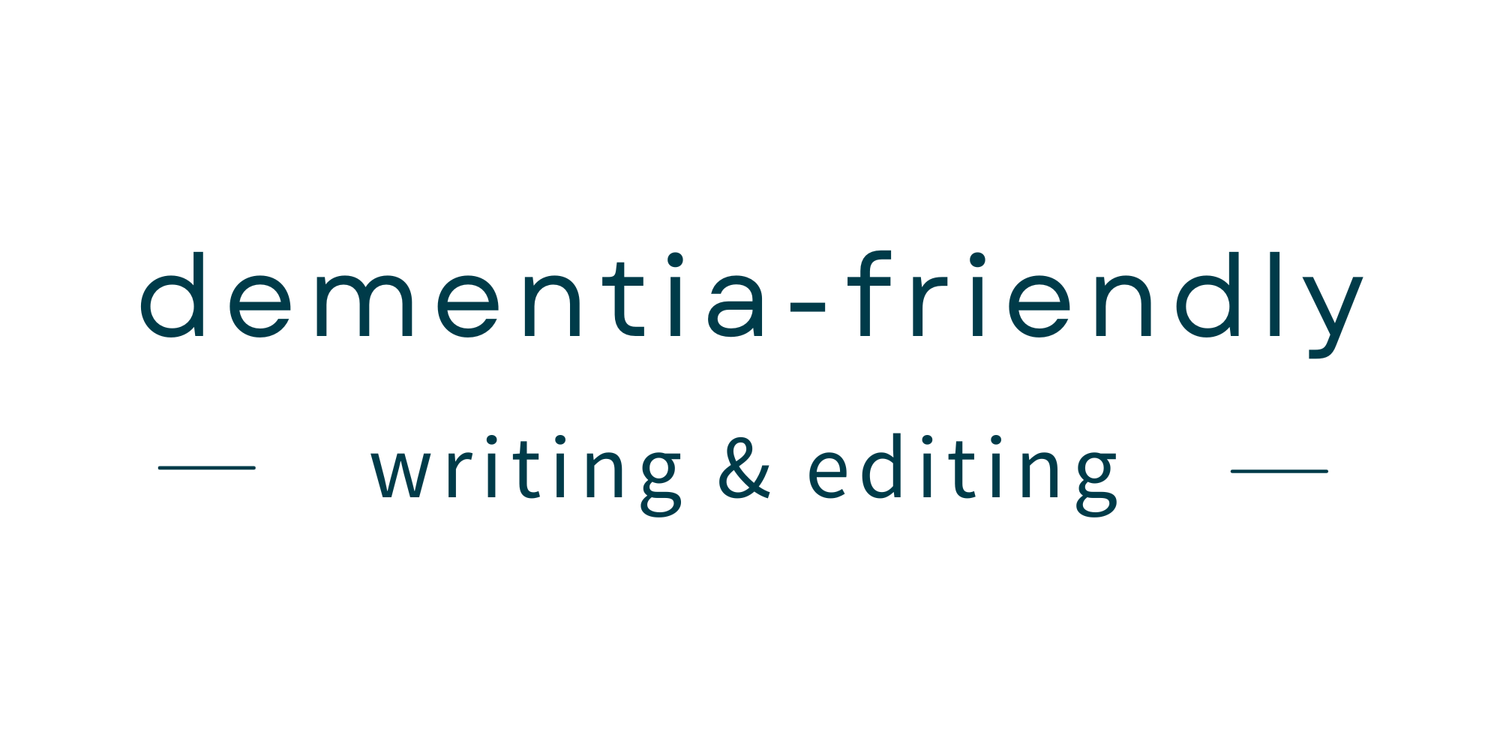When Words Matter
Building on the DEEP Guidance for Dementia-Friendly Documents
Introduction
Organisations across all sectors produce vast amounts of written information.
Often we don’t present this information in the most accessible way.
For people living with dementia, the reading experience can become more difficult, frustrating, and disempowering than it needs to be.
People living with dementia have the right to understand vital information about their care and to respond to consultations on issues that affect them.
The purpose of the project is to make this easier by researching and developing principles for dementia-friendly writing.
Background
The project builds on work already carried out by the Dementia Engagement and Empowerment Project (DEEP), the Alzheimer’s Society, and AbilityNet. It also draws on the principles of Plain English and the work of the World Wide Web Consortium (W3C).
The lead authors are both Experts by Experience. The first is a Plain English Editor and Translator who supports two close relatives with dementia. The second is living with Young Onset Alzheimer’s Disease. Others living with dementia provided examples from their experiences via online forums and local support groups.
The project focuses on dementia-friendly writing in English. Many of the points apply equally to dementia-friendly writing in Welsh, particularly in the areas of planning and layout. Work on dementia-friendly grammatical structures in Welsh is outside the scope of the project. However, the principles of Cymraeg Clir would provide a good starting point for this.
Method
We reviewed existing guidance produced by DEEP and by the Alzheimer’s Society.
This guidance formed the basis for discussions with people living with dementia who gave their views on what makes written information more dementia-friendly. People provided feedback through online forums, social media, local support groups and in-person contact.
We drew information from additional sources of guidance. For example, we looked at how some of the principles of Plain English can help us write dementia-friendly documents. We also looked at standards and guidance from the World Wide Web Consortium (W3C).
Results and Conclusions
We have grouped our results and conclusions under three main headings. We provide these below with some examples of things to consider. These are not exhaustive lists, but provide examples of some of the most frequently mentioned points. We provide quotes from six people living with dementia to illustrate the points.
1. Document Planning:
Understand the needs of the target reader.
Budget enough time and resources for proper planning, writing, design, and editing.
Organise all the information before writing or designing your document.
Plan to deal with one topic at a time.
Make sure that the information progresses logically and is easy to refer to.
Consider whether an alternative format may be more appropriate for your target audience. For example, would a short video work better to convey the information?
Remember that some principles will be different for web-based writing than for paper-based information.
Review your documents regularly to make sure that they are still meeting the needs of readers.
“I can only deal with one thing at a time. The information has to be in separate chunks.”
“I like black text on a very light pastel green, yellow or grey.”
2. Document Layout:
Use wide margins and leave lots of space between elements on the page.
Make the document easy to navigate with clear sections and headings.
Use vertical lists with bullets or numbers to break up continuous text.
Sans serif fonts with clean lines and unfussy shapes are generally well liked. (Well-known sans serif fonts include Arial and Helvetica. Source Sans Pro is a good online option.)
Avoid italics and text decoration.
Only underline text that is a hyperlink.
Use a colour contrast of at least 7:1
Use one single column of text wherever possible.
Left-align all text.
Minimise cross references.
“It is quite helpful to have wide margins for me to write links and comments.”
“People do that black on bright yellow thing for dementia. Personally I find the yellow too bright to focus on.”
3. Document Writing:
Use short sentences and short paragraphs.
Use plain words and prefer shorter alternatives.
Avoid acronyms and abbreviations. Write the names/titles in full.
Use good grammar and good punctuation.
Minimise use of pronouns and possessive apostrophe ‘s’.
Make points positively and avoid negative constructions when you can.
Use active-voice verbs rather than passive ones. (For example, you could write, “The steering group will review the consultation”, rather than “the consultation will be reviewed by the steering group”.)
Keep sentences and paragraphs together on the same page.
Break up “noun-strings” (clumps of nouns) to make the meaning clearer.
Avoid clichés.
“People don’t always like Oxford commas, but it’s much better when they use them - it separates out the information.”
“It’s good when they put a list of contents at the front and an index at the back. ”
References
Author Information
Heather Eason, MCIL, AITI, Dementia Expert by Experience, Plain English Editor
Mark Judd, Dementia Expert by Experience
Dr Sally Stapleton, Consultant Clinical Psychologist, Sussex Partnership NHS Foundation Trust
Megan Martin, Translator, Dementia Expert by Experience

